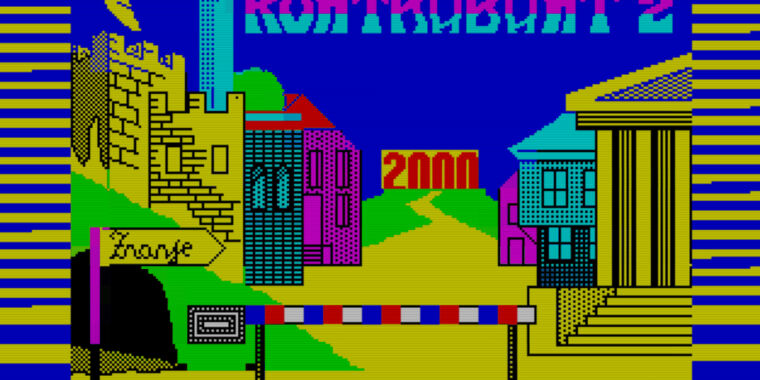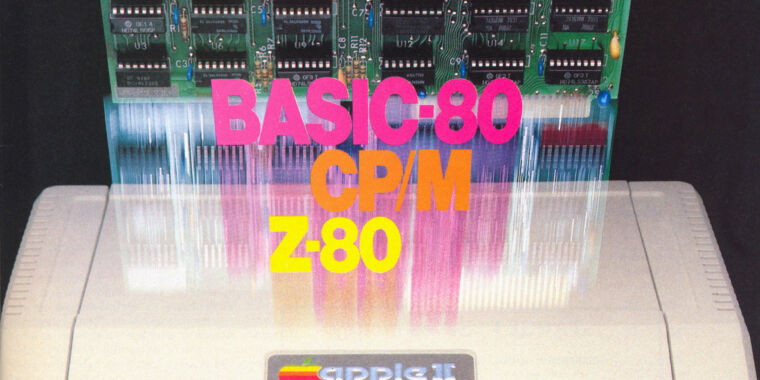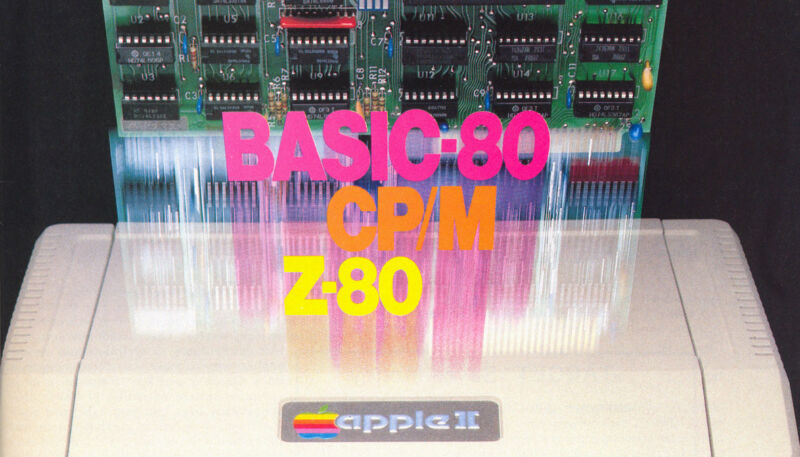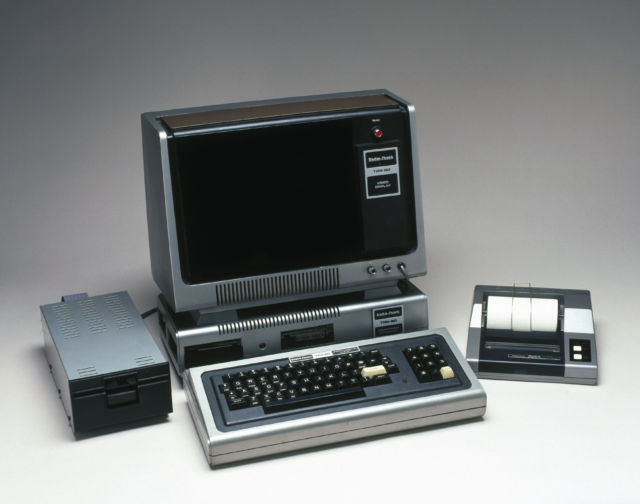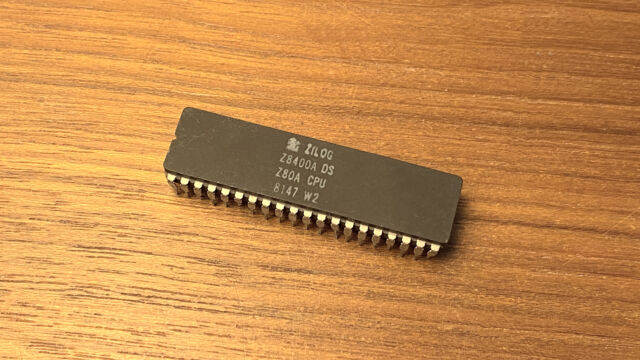40 years later, Kontrabant 2 for ZX Spectrum is rebroadcast on FM in Slovenia
Cassettes are back, baby —
Celebrating radio waves, magnetic tape heads, and smuggled 8-bit computers.

Enlarge / In 1984, the year 2000 was so promising, students made entire games promising to take you there.
Radio Student
Software is almost impossibly easy to download, distribute, and access compared to 40 years ago. Everything is bigger, faster, and more flexible, but there’s a certain charm to the ways of diskettes and cassettes that is hard to recapture. That doesn’t mean we can’t try.
By the time you read this, it’s likely that Kontrabant 2 will have already hit the airwaves on Radio Študent in Slovenia. At 9: 30 pm Slovenia time (UTC+2 in Daylight Savings Time), if you are tuned to 89.3 FM, hitting record on a cassette tape will capture a buzzing sound that will run until just over 50KB have been transmitted. If all went well, you can load the tape into your working ZX Spectrum or bring it to the Computer History Museum in Slovenia and use theirs to try it out.
reposted it on his personal site. Kontrabant, which is text-only, has the player travel about the country (“and beyond!”) to collect all the parts of a ZX Spectrum. You meet famous smugglers from Slovene history, get a picture of yourself so you can leave the country for certain parts, and at one point obtain an Austrian porn magazine, which, in typical adventure game style, is later traded for something else.
A “Yugosaurus” in Kontrabant 2.
Radio Student/Vlado Vince
Kontrabant 2, from 1984, added the kinds of garish colors and flashing graphics that ZX Spectrum enthusiasts can recognize from a hundred yards away. This time you’re trying “to make your way to the year 2000 and to the amazing computers of the future,” Vince writes, and the game layers in political and social subtext and critiques throughout the journey. Also, the original Radio Študent cassette tape version had punk rock songs by “the Kontra Band” on it, which is neat as heck.
Kontrabant and its sequel were written by Žiga Turk and Matevž Kmet, students at the time, who are talking about the games and the times at the Computer History Museum Slovenia today. If you have a chance to visit that place, I think you should do so, given the impressive number of working vintage computers listed. Turk would go on to found Moj mikro magazine, a monthly computer magazine running from 1984 to 2015. He started the Virtual Shareware Library, which later became shareware.com (now a Digital Trends site I don’t quite recognize), and WODA, the Web Oriented Database. He’s now a professor of construction informatics in Ljubljana, Slovenia.
You can play Kontrabant 2 on the Internet Archive’s emulator if you can read or translate Serbian and understand the text prompts. YouTube lacks a playthrough of the game with graphics, though a later port to a native platform, the Iskra Delta Partner, is available in Apple-II-ish green-on-black.
40 years later, Kontrabant 2 for ZX Spectrum is rebroadcast on FM in Slovenia Read More »
